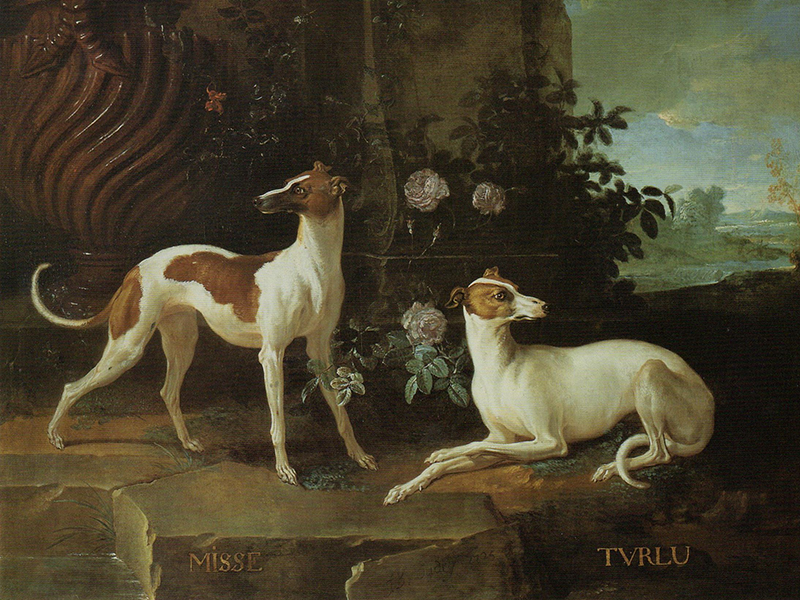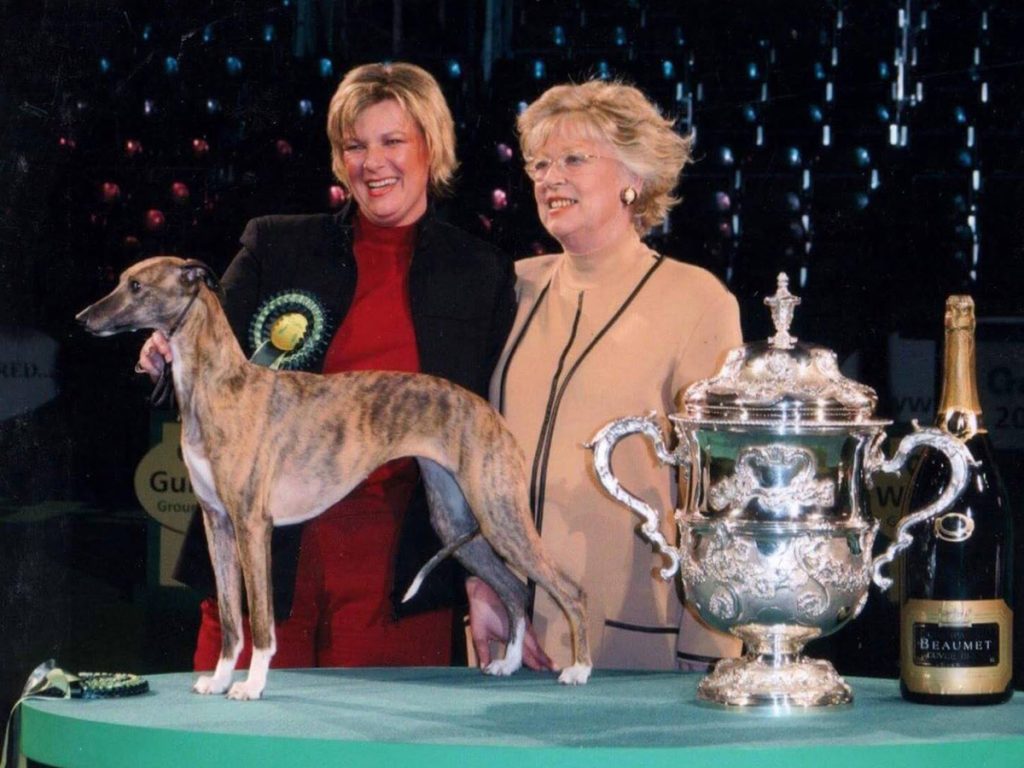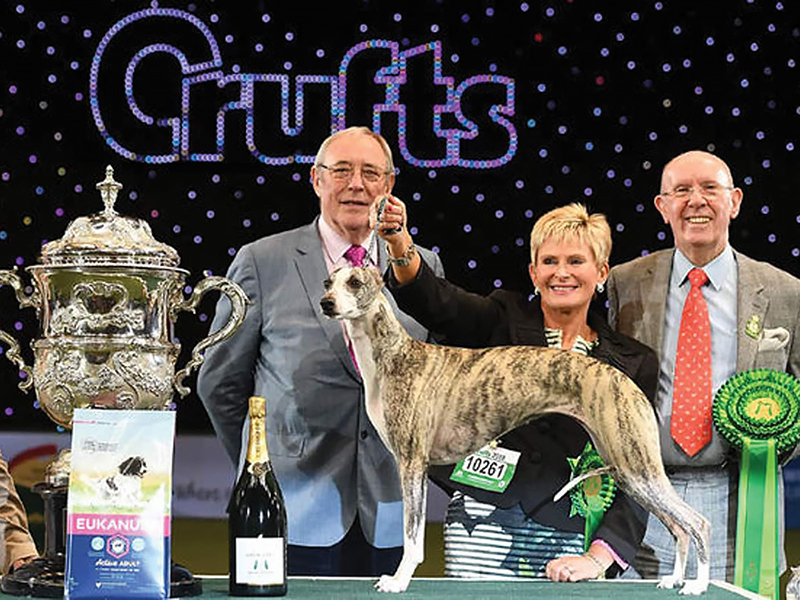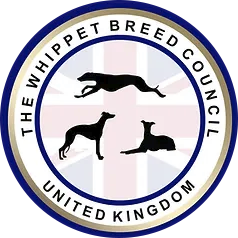History
Whippets were bred to hunt by sight, coursing game in open areas at high speeds. One can find numerous representations of small greyhound-like hounds in art dating back to Ancient Egyptian times. Pharaohs bred a small sighthound dog related to the greyhound to keep in their palaces, and this dog may be the ancestor of today’s Whippets. In medieval England, a small greyhound breed became popular for use as a ratting dog. The first written English use of the word whippet with regard to a type of dog was in 1610. However, the first dog to be called a Whippet was actually a greyhound-spaniel cross and has little to do with the modern Whippet.
The original Whippets were thought to be English Greyhounds that were too small for stag hunting in the forests of England. These dogs were frequently returned to their breeders, who were usually peasants and as such could not own hunting dogs under the Forest law. Because of this, dogs returned to them were maimed, usually by cutting a tendon in a leg or removing the toes on one paw. The breeders kept these dogs and continued to breed them, producing a smaller version of a greyhound that was suited for rat catching and hunting hares and rabbits. When the Forest Law was repealed, the “small greyhounds” became immensely popular. Whippets were then commonly known as “snap dogs” for their tendency to “snap up” nearby prey.
There is a picture by Jean-Baptiste Oudry (1686–1755) titled Misse and Turlu, Two Greyhounds Belonging to Louis XV of two English Whippets presented to Louis XV. The dogs are either Whippets or small greyhounds, but are probably related to an early form of the Whippet. Oudry also painted a second painting of Misse with a different, non-sighthound dog.
There is also a painting by Pompeo Batoni entitled Portrait of Charles Compton, 7th Earl of Northampton which features a similar Whippet-like dog.

Misse and Turlu

Charles Compton, 7th Earl Of Northampton, featuring a dog that appears to be an early form of Whippet.
In the nineteenth century, Whippet racing was a major sport in England. The Whippet was held in high regard in the northern parts of England and Wales but was generally disregarded in the rest of the country. At the time, there were two varieties of Whippet. The first type had a smooth coat, was more popular in Lancashire, Yorkshire, and the Midlands, and became the modern Whippet. The other had a rough coat from crossbreeding with Bedlington Terriers, was more popular in Durham and Northumberland and was frequently referred to as a “rabbit dog”. Early specimens were taken from the race track by the dog fanciers of the time and exported around the world. John Taylor said that “In all the shapes and forms of dogges; of all which there are but two sorts that are useful to man’s profits, which two are the mastiffe and the little curre, whippet, or house-dogge; all the rest are for pleasure and recreation.”

Queen Mary with a whippet
The age of the modern Whippet dawned in 1891 when The Kennel Club granted the breed official recognition, thus making the Whippet eligible for competition in dog shows, and commencing the recording of their pedigrees. In the United States, the Whippet was recognised in 1888 by the American Kennel Club. Whippets arrived in the United States with mill operators from England, and the first populations were established in Massachusetts.
In 1992, Ch Pencloe Dutch Gold won best in show at Crufts, as did Ch Cobyco Call the Tune in 2004 and Ch Collooney Tartan Tease in 2018. Taking reserve best in show at Crufts in 2016 was Ch Nothing Compares To You At Crosscop and in 1990 Ch Nutshell Of Nevedith who is still the breed record holder with 43 challenge certificates awarded by 43 different judges.
Source: Wikipedia

Ch Pencloe Dutch Gold, Best in Show Crufts 1992

Ch Cobyco Call the Tune, Best in Show Crufts 2004

Ch Collooney Tartan Tease, Best in Show Crufts 2018

